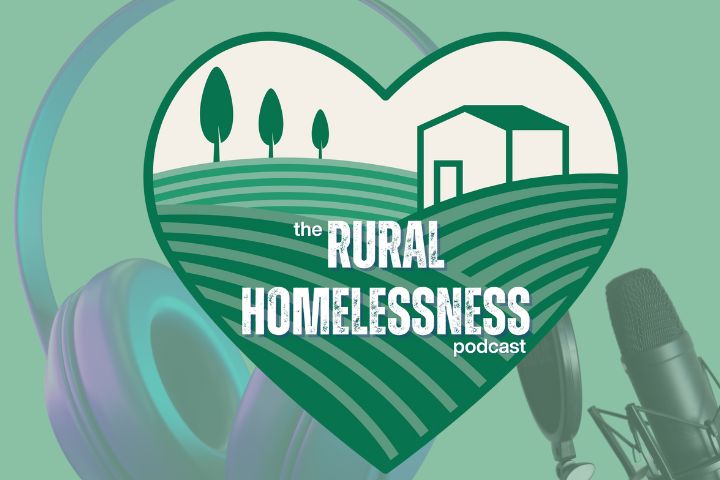➤
Back to News
10 July 2024
Differences and Similarities between Rural and Urban Homelessness
LISTEN TO THE EPISODE OF OUR PODCAST HERE
On the most recent episode of the Rural Homelessness Podcast, host Matt McChlery interviewed the CEO of London homeless charity Just Homes, Christina Isaac, and our CEO, Keith Smith. Whilst Ferry Project is based in Wisbech, Just Homes operates in Newham, an inner London borough: two very different places, facing very different challenges.
So what are the key differences between rural and urban homelessness? The two CEOs had a lot to say about their charities and how location impacted their work.
Wisbech is situated in the heart of the Fenlands, and is linked with other towns only by roads and an intermittent bus service. Surrounding the town are large areas of farmland and woodland, which is where a large number of homeless people Ferry Project supports are found, as it is safer here than on the streets. It’s 16 miles from Ferry to the nearest other homeless charity, so it’s very isolated and the charity has to cover a huge area in terms of the support it provides to people. On the other hand, Just Homes sees, as Christina put it, the “extreme opposite”. There are so many charities around London and in Newham that it’s often challenging to coordinate between all of them, resulting in overlaps of support and wasted resources.
This impacts what type of support the charities need to provide too; Just Homes are able to target their support at specific demographics with specific needs, where Ferry Project has to cater for everyone coming in from across Wisbech and the surrounding area, so often receives a much wider range of clients all with different needs.
Just Homes faces an additional challenge to providing support, however, which is the cost of housing in London. It’s a huge struggle for the charity to find accommodation where they can run ‘homes’: houses with around 8 occupants, all of whom will have come off the street. As the number of multiple-occupancy residences has begun to outnumber homeowners, many London boroughs including Newham have now banned planning for new HMOs (houses in multiple occupation). This means the charity can’t easily expand its provisions to provide support to more people, as even if they could find affordable accommodation, they aren’t allowed to use it for multiple occupants. High house prices also mean they can’t move people on very easily, as often there’s nowhere for them to go but back to the streets.
The issue is so bad that, despite having a similar number of bed spaces, Just Homes was able to support almost half the number than Ferry Project did in previous years, simply because it’s so difficult to find places for clients to move on to in Newham.
The charity’s locations also impact the demographics of people they get coming into their services. Newham is home to Stratford International, a large train station bringing people in from not just all over the country but all over the world, most of whom are looking for work. Many cannot afford the house prices and therefore end up on the streets. The huge influx of people every day means charities in the area are inundated with help requests; last year Just Homes received around 9x the number of applications relative to the number of bed spaces they have. Furthermore, the incredibly diverse population means that whilst many of their clients don’t have particularly complex needs, a large number face language barriers that make it difficult for them to find work or participate in education.
The charity typically takes in working age people, and their structure of ‘homes’ means that they can teach clients good hygiene standards, cleaning and cooking skills whilst also providing mental health support and helping them to engage with employment and/or language training.
Wisbech does see some of the same patterns in terms of people moving in for work, although in smaller numbers. The large proportion of manual labour and agricultural based jobs in Wisbech attracts particularly eastern European migrants, but people from other areas too, and means the town is home to at least 17 nationalities. Many are able to find accommodation fairly easily, though, so the people that become homeless tend to be those that have complex needs which mean they haven’t managed in housing on their own. Roughly 80% of Ferry Project’s clients have a mental health issue, making healthcare a real priority. In contrast to Just Homes’ approach of smaller individual homes, Ferry runs a hostel in which they house over 35 people. They have a specific mental health support worker and a counselling room for clients within the hostel, and they also often bring in the local GP practice, who come and work with clients.
Like Just Homes, many of their clients are also lacking the education they need to get into better employment, as Wisbech is one of the bottom 5 towns in the UK for qualification levels, so supporting people in taking educational courses or developing skills needed for employment is equally a big priority.
Before the episode drew to an end, Christina and Keith were both asked where they saw their charities in five years time. This seemed to be an area where rural and urban were in agreement: both wanted to grow social enterprises, so they could bring in more income for the charities and be less reliant on unstable government/local authority funding. However, each identified the opposite problem to the other. For Keith, although Ferry has the space to run social enterprises, in the local Queen Mary Centre, there aren’t enough services around to help out. Christina, on the other hand, said that the charity in the past had run incredibly successful social enterprises, but that this had dropped off more recently due to a lack of premises on which to base them.
So, similar on some levels, but vastly different on others, urban and rural homelessness both pose huge challenges to the organisation's trying to tackle them, but, in the case of Ferry Project and Just Homes, each has adapted to face these challenges in their own ways.






